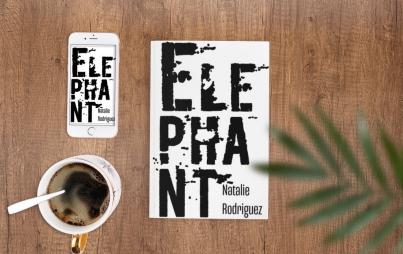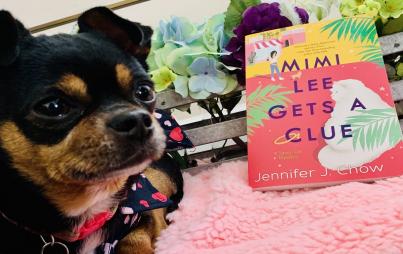
I suggest that no story, whether it’s fiction or nonfiction, is real. (Photo by Patrick Fore on Unsplash)
This article first appeared on Luna Luna and has been republished with permission.
The more I read, the more I’m convinced that there’s no meaningful difference between fiction and the memoir we call nonfiction. The best nonfiction is not reporting: it’s a fabrication that reveals the meaning beneath the story.
Good memoir is fiction that wants to be believed.
I suggest that no story, whether it’s fiction or nonfiction, is real. There is plenty to write about: reality passes by in a ceaseless, perceptible stream. But once the writer has started to select which details to include, and how to arrange them, and chosen the structure that will house them, and decided how much outside reading or research to do, and spent hours editing a story into something that is readable, they have created something artificial. All art contains elements of real life. The way those elements are arranged—the way they depart from reality—transmits an emotional experience to the reader which is more true than any of the details in the work itself.
This year, I read a lot of other people’s writing, most of which was fictional. One of these stories was “Cat Person.” As Larissa Pham pointed out, this short story was misidentified by readers as an article, a piece, a commentary, and an essay. It was none of the above. Pham wrote in Village Voice, “When we cannot even understand that a short story is fiction, and that a writer has carefully chosen how to construct her world, with its own architecture and a universe separate from our own, we flatten it completely.”
“Cat Person” disturbed because it was too realistic for some readers.
Its verisimilitude provoked some incredibly emotional responses, especially from people who misidentified it as nonfiction. The qualities that made “Cat Person” appear real are the same ones that, in a personal essay, feel banal. Yet, this was not a particularly complicated story: it accomplished a sense of realness by using those same memoir techniques. Its scope was small, with two main characters. A lot of the dialog was text messages, giving a sense of intimacy, as though you were reading over someone’s shoulder or hearing their private thoughts.
And the story had its beginnings in reality. Author Kristen Roupenien said, “The story was inspired by a small but nasty encounter I had with a person I met online.”
But if “Cat Person” had been a fictionalized account of one of Roupenian’s dates? Well, that’s a different story. We accept fiction that grows from personal experience. We’re not so kind to first-person accounts that have been partially or totally invented by the writer.
Nonfiction gets in trouble when it uses the same devices fiction does, including adding details, characters, and events that didn’t actually happen — but that’s unfair, because after all, both genres use the same methods of storytelling. The personal essay is a form, just like the short story is a form, and once the writer starts pressing the keys of the reader’s emotional piano, it’s easy to forget it’s all made up. But just because we read something as believable — because we choose to believe what we read — doesn’t turn fiction into facts.
Once my life’s events become a story, they cease to be real: they become fictional.
Certain feelings and experiences may be factual, but once they have been crafted into an essay, they are no longer of me. They are things that happened to the character that is based on the person I want the reader to think I am. It is a fallacy that reading someone’s personal story means that you know them. When I write memoir, the readers don’t know me: they are reading about the narrative me, who is a fictional character. I am not doing this to be deceitful — it’s the nature of writing memoir. The things I remember, and turn into memoir, are fictionalized by my memory, and I use fiction techniques to write about them. Memoir, after all, has a plot. The details are carefully selected and brightened. The dialog is less boring than the things we really said to one another. Time is compressed and bent. Those are decisions every storyteller makes, whether they are writing about Rapunzel or their own fictional twin.
To ameliorate the illusion of the narrative self, writers stake out some kind of expertise, through lived experience or study or whatever. It makes their stories seem more credible. The writer’s qualifying statement may be the hook of the story: “I had a farm in Africa,” wrote Karen Blixen, and of course we believe her. Time is spent explaining the writer’s right to tell this particular story: this same stipulation can also happen off the page. I’m not knocking this practice. It prevents problems of appropriation, like when an outsider writes from a perspective that isn’t theirs to claim. But an informed, aware reader will be able to identify the authenticity of that assertion, too — all it takes is a look at the author bio, or a cursory search, to know if an author is trespassing.
It’s hard to talk about this — the fictional qualities of nonfiction — because people do not always like it when you hold up their personal essay and say look at this marvelous invention. Instead of sounding like you’re praising their craft, it comes off like a insult. Personal writing is difficult because it requires the author to stay close to the details of their history. It means not always being the hero, and telling stories that cast the writer in an unflattering light. It is a kind of vulnerability that is risky to pursue and difficult to sustain. Identifying the craft in memoir seems, somehow, to diminish that sacrifice.
However, we must identify it. We want to know how true something is, not how something is true. Because we are taught to value truth as an absolute, in dollars-and-cents; because we behave like petty accountants for truthiness and weigh every sentence to see how much water it holds, we get very angry when an essay that moved us turns out to be fiction, or if the person who told it to us wasn’t who we thought they were. If we read a memoir that was carefully constructed to deliver a specific emotional experience, and we happen to see the screws and springs that hold up its inner mechanism, we are furious. We have been tricked. We’ve been made a fool. We want a refund. We’ll never read this author again. And I would suggest that that is the danger of admitting that there’s no difference between fiction and nonfiction: the stakes are much higher, for everyone.
You Might Also Like: How Do Memoirists Survive Telling Their Hard Stories?
Let’s talk about fake news.
Fake news is not fiction. It is propaganda. It is falsified information that has been spun like cotton candy, and collapses when subjected to any outside pressure or inquiry. Fake news disturbs because news is supposed to be trustworthy, a reporting of the facts that is as straight and unbiased as possible. Ideally, the news is just that: news. It is supposed to share information with us, not tell us how to feel about what we’ve learned. Of course, there’s no such thing as unbiased journalism; those same storytelling techniques of theme, selective interviews, editing, and angle can all affect the way that news is shared. Perspective, in news as in fiction, is everything. As Pam Houston says in her essay “Corn Maze,” “For some of us truth can never be an absolute ... there can (at best) be only less true and more true and sometimes those two collapse inside each other like a Turducken. Given the failure of memory.”
However, unlike reporting or even memoir, the intention of fake news is to confuse, manipulate, and mislead.
Fake news is malicious. It may use characters or locations that are real, but the rest is manufactured, specifically to obscure the truth. That’s light years away from a story like “Cat Person,” but the sense of betrayal — the I’ve been had feeling — is powerful for some readers. Break that trust, and there’s little hope of recuperation.
For example, the tale of James Frey. He wrote A Million Little Pieces, which was also on my reading list this year. The book was a pick for Oprah’s Book Club in 2003. When the bestseller was revealed to be a novel — at best, a highly fictionalized memoir — Oprah was furious. She confronted Frey, saying that she felt “betrayed.” The book was exposed as a fabrication, and when it went into later editions, it included a personal note from Frey, apologizing for making up parts of the story. For lying.
I picked up A Million Little Pieces, wondering if Frey would trick me, too. Now, I know I’m only a book reviewer, not a literary critic. (Writing this essay makes me feel nervous.) I only feel like I’m an expert on myself, my own experiences. I do feel confident to judge A Million Little Pieces: I’ve been in recovery from heroin addiction and alcoholism for more than a decade, and have met many people who could tell the exact same story Frey’s narrator does. Even so, the novel was obviously fiction. I was surprised at how credulous readers are. (Even Oprah.) How could anyone have believed this was factual? There are much better books that pull the wool over your eyes. Annie Dillard’s lovely, bright Pilgrim at Tinker Creek could be pure imagination for all we know — having seen one caterpillar, you could invent them all.
Frey was the recipient of the same who-can-we-trust outrage that bubbles up every time a Breitbart article is inadvertently cycled through the mainstream news. But the fact is that everything, from headline news to blog posts, contains some form of storytelling technique. Even if we don’t like it; even if we want to believe that what we are reading is the straight scoop. The tells are there.
I think that’s why journals and publishers and whoever’s in charge of this kind of thing are so careful to distinguish between fiction and nonfiction. They want to maintain their integrity. They want to keep their credibility. Magazines make a point to divide their content into personal essays, reported news, reviews and criticism, and so on.
However, when they do this, they reinforce the idea that readers can’t tell the difference for themselves. The message is that we don’t have the ability to read critically, and that we don’t know the truth when we encounter it. Yet, the difference between nonfiction and memoir is like night and day. What is the intention of fiction? To move you. It arranges its facts accordingly.
Good fiction transmits emotion. That is its agenda: to create emotion in the reader. Stories that feel ‘true’ rarely follow the rules of reality. They are fictionalized, not linear. In his Nobel lecture, Kazuo Ishiguro said, “In the end, stories are about one person saying to another: This is the way it feels to me. Can you understand what I’m saying? Does it also feel this way to you?”
Facts make fiction, including memoir, seem more real. It creates stories that are meaningful, that ask us to imagine ourselves in the same situations. The truth in those stories is more valuable than the facts that elicit them, because they’re telling us the truth about ourselves.
What’s more important: a story that is factual, or a story that is true?
The division between nonfiction and memoir emphasizes the value of facts, and places a story on a sliding scale of truthiness. Once someone starts telling you what is factual and what is invented, you stop reading analytically: you believe what you’re told. You end up unable to distinguish between what’s imaginary and what’s true.
How ironic: When we hand over the responsibility of discerning the true from the false, we lose our ability to identify it ourselves. Yet, when we go looking for the truth, it isn’t hard to find. Memoir uses fiction techniques to expose the essential truths of human experience and transmit powerful emotions. If we read these stories as fiction, we can discern their deeper message. All we have to do is listen closely, and let each story tell us what it is.








